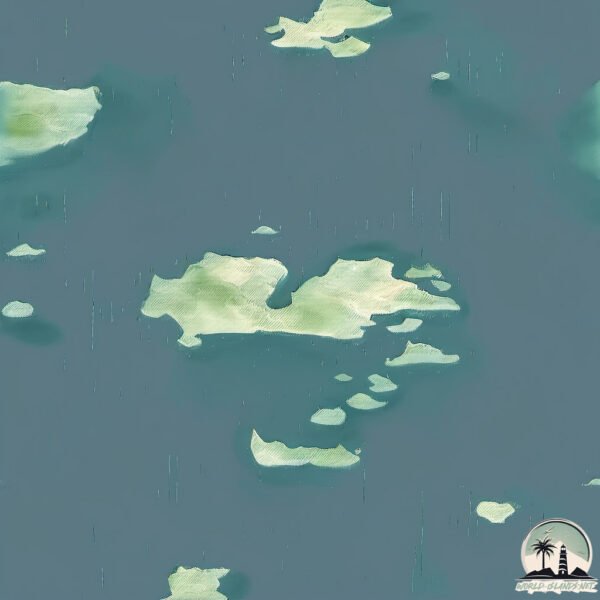Welcome to Skull , a Tropical island in the Arafura Sea, part of the majestic Indian Ocean. This guide offers a comprehensive overview of what makes Skull unique – from its geography and climate to its population, infrastructure, and beyond. Dive into the details:
Geography and size of Skull
Size: 6.933 km²Coastline: 13.7 kmOcean: Indian OceanSea: Arafura SeaContinent: Oceania
Skull is a Small Island spanning 6.9 km² with a coastline of 13.7 km.
Archipel: –
Tectonic Plate: Australia – A major tectonic plate covering Australia, New Zealand, and parts of the Indian and Pacific Oceans, known for its relative stability and occasional seismic activity.
The geographic heart of the island is pinpointed at these coordinates:
Climate and weather of Skull
Climate Zone: TropicalClimate Details: Tropical Savanna, WetTemperature: Hot
Climate Characteristics: Defined by distinct wet and dry seasons with high temperatures year-round. Pronounced rainfall occurs during the wet season, while the dry season is marked by drought.
Topography and nature of Skull
Timezone: UTC+09:30Timezone places: Australia/AdelaideMax. Elevation: 21 m Mean Elevation: 10 mVegetation: Evergreen Broadleaf ForestTree Coverage: 42%
The mean elevation is 10 m. The highest elevation on the island reaches approximately 21 meters above sea level. The island is characterized by Plains: Flat, low-lying lands characterized by a maximum elevation of up to 200 meters. On islands, plains are typically coastal lowlands or central flat areas.
Dominating Vegetation: Evergreen Broadleaf Forest
Vegetation: 5 vegetation zones – Highly Diverse Island
Infrastructure and Travelling to Skull
Does the island have a public airport? no .
Does the island have a major port? no .
The mean population of Skull is 0 per km². Skull is Uninhabited. The island belongs to Australia .
Continuing your journey, Watson is the next notable island, situated merely km away.
Kong vs Skull Crawler | Kong Skull Island (2017) | Warner Bros.
Kong vs Skull Crawler Kong Skull Island 2017 Warner Bros. && Legendary Entertainment.
Kong vs Skull Crawler | Kong Skull Island (2017) | Warner Bros.
Kong vs Skull Crawler Kong Skull Island 2017 Warner Bros. && Legendary ...
Kong vs Skull Crawler Kong Skull Island 2017 Warner Bros. && Legendary Entertainment.
Skull Island | Official Trailer | Netflix
Get ready to explore Skull Island, the very last place on earth you ...
Get ready to explore Skull Island, the very last place on earth you want to be shipwrecked. Don't miss Skull Island June 22nd only ...
Kong Skull Island - Mother Longlegs Scene
Watch the Mother Longlegs scene from Jordan Vogt-Roberts' hit 2017 ...
Watch the Mother Longlegs scene from Jordan Vogt-Roberts' hit 2017 film, Kong: Skull Island.
Australia is classified as Developed region: nonG7: Developed economies outside of the Group of Seven, characterized by high income and advanced economic structures. The level of income is High income: OECD.
News – Latest Updates and Headlines from Skull
Stay informed with the most recent news and important headlines from Skull. Here’s a roundup of the latest developments.
Loading...
Please note: The data used here has been primarily extracted from satellite readings. Deviations from exact values may occur, particularly regarding the height of elevations and population density. Land area and coastline measurements refer to average values at mean high tide.

